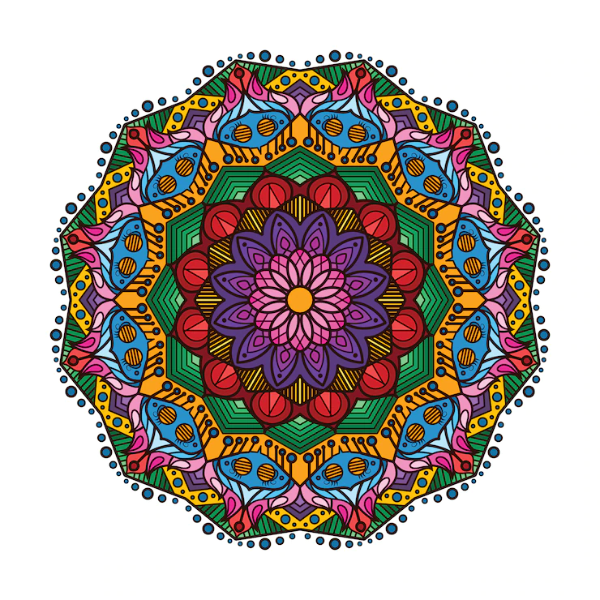You need your ability to watch or make mandala and it should attach to our intuitive and intellectual self, to be able to at the same time simultaneously use the right and the left hemisphere of our brain. Mandala help us by this procedure of connecting to ourselves, fine-tuning within.
Different shapes in Mandala

Dot: everything is one, symbol of the Un-manifested. Circle: wholeness, integrity, unity
Horizontal line: Divide it up from down, the earth and the sky. Maternal energy. Vertical line: connection between worlds, energy. Divided to right and left. Cross: two lines meet and form a center. Recognition.
Triangle is with the vertex pointed upwards: aspiration, energies pointing upwards, in the direction of the spiritual sphere.
Triangle with vertex pointed downwards: aspirations towards the earthly and material sphere.
Square: Our existence in the material world.
The Hexagons were created from the above-mentioned triangles: unity spiritual and material aspirations.
Circle and square together: The Implementation of the spirit in the material. Octagon: harmony in human existence
Pentagon: human being brought to perfection.
Heptagon: spiritual way
Circle divided as twelve parts: cycle of nature and wholeness.
Swastika: Sun, energy, movement of the Universe.
Spiral: Cyclic movement, dynamics.
The two directions of the spiral symbolize the constructive and the destructive aspects.
Mandala color Meaning

Pure colors : have a number of different shades
Red: fire, passion, (color of the 1st chakra)
Orange: ample energy, heat and (color of the 2nd chakra)
Yellow: power, light, joy, (color of the 3rd chakra)
Green: It represents peace, nature, (color of the 4th chakra)
Blue: protection, coldness, (color of the 5th chakra).
Violet: spiritual forces, (color of the 6th chakra)
White: purity, and unity, (color of the 7th chakra)
Black: It represents secret, darkness
Grey: just like brown, have several shades. They can either be cold or warm and they can be almost identical with one of the pure colors. They can be vivid or soft, and can express boredom and sadness, on the contrary, vitality and cheerfulness.